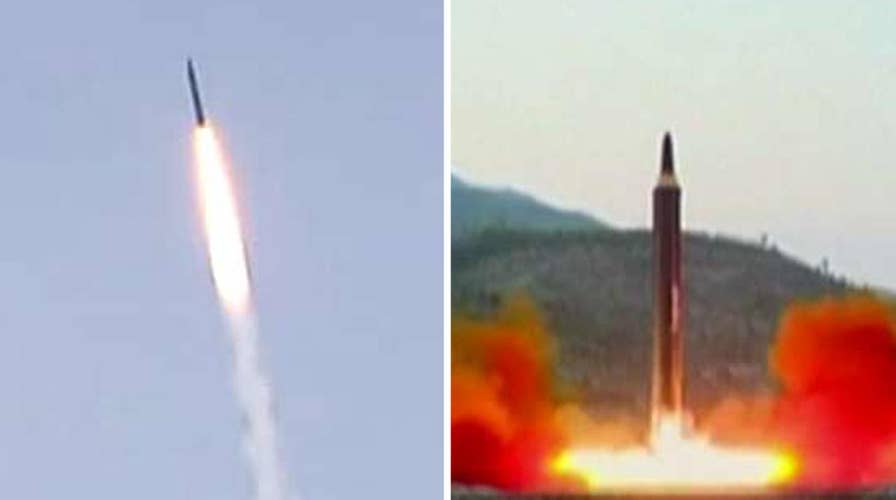Pentagon performs test to shoot down ICBM
Ground-based interceptor missile launched from Vandenberg Air Force Base; Jonathan Hunt reports
The Pentagon’s missile defense test Tuesday has been planned for years, but nobody planned for just how pivotal its timing would be.
Just two days after the latest North Korean provocation and amid heightened concerns the rogue regime is inching closer to a long-range missile capable of carrying a nuclear weapon, the Pentagon for the first time attempted to destroy a target simulating the speed and range of a potential North Korean intercontinental ballistic missile.
“It will test the system against an ICBM-type target and will represent the longest intercept test of a target to date in the program,” said Vice Adm. James Syring, director of the Missile Defense Agency.
In Tuesday's test -- the results of which won't be known until Wednesday -- an unarmed rocket lifted off from the Marshall Islands in the Pacific Ocean, representing a would-be North Korean threat. An interceptor then blasted off from an underground missile silo at Vandenberg Air Force Base north of Los Angeles, on a mission to take out the dummy target over the Pacific Ocean.
In the final stage, hundreds of miles above earth, a “kill vehicle” was set to close in on the target, navigating through space with thrusters powered by real-time ground updates. Ultimately, it attempts to destroy the target by sheer velocity, both vehicles moving at thousands of miles per hour.
It’s the proverbial “bullet hitting a bullet.”
“I have complete confidence in the system and the warfighters operating the system,” Syring told Fox News in a rare interview at his headquarters at Fort Belvoir, Va.
About half of the previous tests of the Ground-based Midcourse Defense system have failed, attracting criticism from the Government Accountability Office and the Pentagon’s own weapons testing office, which says the system has “a limited capability” to defend the U.S. against an ICBM attack.
NORTH KOREA WARNS OF BIGGER 'GIFT PACKAGE' TO UNITED STATES
“This is the hardest thing that the Pentagon has ever tried to do,” said Phillip Coyle, an expert with the Center for Arms Control and Non-Proliferation and a former official in the Pentagon weapons testing office. Coyle, one of the most vocal critics of the interceptor program, says it needs more development and testing.
“I think they're trying to put their best foot forward for the program,” he said. “But they have a long way to go."
Faced with the prospect of an enemy state obtaining long-range weapons, the Pentagon rapidly deployed the interceptor system in 2004, long before development and testing were complete.
JAPAN VOWS ACTION AGAINST NORTH KOREA
“Fielding a capability was more important than waiting years to field a capability later,” Syring said. “It was...better for the agency at the time to field the capability as a deterrent and a contingency against a possible North Korean ICBM, with the direction to improve it over time and to fill out the architecture, which we've done.”
Thirty-six interceptors stand guard at Vandenberg and Fort Greely, AK. By the end of 2017, the Pentagon plans to have forty-four.






















